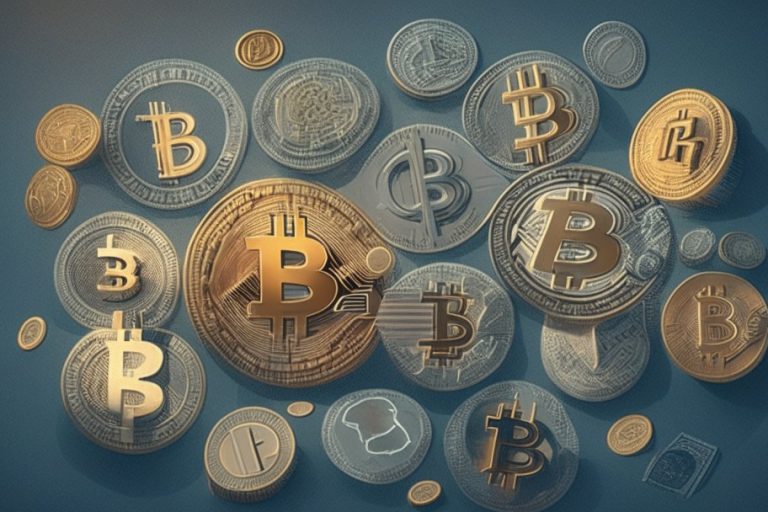Cryptocurrency and digital payments
.webp)
Cryptocurrency and digital payments have revolutionized the way we think about and use money.
With the emergence of decentralized, digital currencies like Bitcoin, Ethereum, and Litecoin, it’s now possible to send and receive payments instantly, anywhere in the world, without the need for a bank or financial intermediary.
But what exactly is cryptocurrency, and how does it work? In this blog post, we’ll explore the basics of cryptocurrency and digital payments, and delve into some of the most popular cryptocurrencies and digital payment platforms available today.
What is Cryptocurrency?
Cryptocurrency is a digital or virtual currency that uses cryptography for security.
Cryptocurrency is decentralized, meaning it is not controlled by a single entity like a bank or government. Instead, it is supported by a network of users who validate and record transactions on a public ledger called a blockchain.
Cryptocurrencies use complex algorithms and cryptography to secure and verify transactions, ensuring that they are secure and cannot be tampered with.
Each transaction is recorded on the blockchain, which is a publicly available record of all transactions that have taken place on the network.
The most well-known cryptocurrency is Bitcoin, which was created in 2009 by an unknown individual or group of individuals under the pseudonym Satoshi Nakamoto.
Since its inception, Bitcoin has become the most valuable and widely used cryptocurrency, with a market capitalization of over $1 trillion as of 2021.
Other popular cryptocurrencies include Ethereum, Litecoin, and Dogecoin. Each of these cryptocurrencies has its own unique features and uses, and they can be used for a variety of purposes, including buying and selling goods and services, as well as speculation and investment.
How Do Cryptocurrencies Work?

Cryptocurrencies use decentralized networks to process transactions and verify their authenticity.
This is done through a process called mining, which involves using powerful computers to solve complex mathematical problems.
Miners are individuals or groups of individuals who use their computing power to process transactions and add them to the blockchain.
In return for their work, miners are rewarded with a small amount of the cryptocurrency they are mining.
The process of mining helps to secure the network and prevent fraud, as it requires a significant amount of computing power and energy to complete.
It also helps to ensure that the supply of the cryptocurrency remains limited and controlled, as there is a finite number of coins that can be mined.
Advantages of Cryptocurrency and Digital Payments
There are several advantages to using cryptocurrency and digital payments over traditional fiat currencies and payment methods. Some of the most notable benefits include:
- Decentralization: As mentioned above, cryptocurrencies are decentralized and not controlled by any single entity. This means that they are not subject to the same regulations and restrictions as traditional currencies, which can make them more attractive to users who value privacy and financial freedom.
- Fast and efficient: Cryptocurrency and digital payments are fast and efficient, as they allow for instant, global transactions without the need for intermediaries like banks. This can be especially useful for cross-border payments, which can often be slow and expensive using traditional methods.
- Secure: Cryptocurrencies use advanced cryptography and decentralized networks to secure transactions and prevent fraud. This makes them a secure and reliable choice for online payments and transactions.
- Low fees: Cryptocurrency and digital payment platforms often have lower fees than traditional payment methods, as they do not need to rely on intermediaries to process transactions. This can make them a more cost-effective choice for merchants and consumers.
Popular Cryptocurrencies and Digital Payment Platforms
Now that we’ve covered the basics of cryptocurrency and digital payments, let’s take a closer look at some of the most popular cryptocurrencies and digital payment platforms available today.
Bitcoin
As mentioned earlier, Bitcoin is the most well-known and widely used cryptocurrency. It was the first decentralized digital currency and has a market capitalization of over $1 trillion as of 2021.
Bitcoin is based on a decentralized network of users who validate and record transactions on a public ledger called a blockchain. Transactions are secured and verified through a process called mining, which involves using powerful computers to solve complex mathematical problems.
Bitcoin is often used as a store of value and a means of exchange, and it can be used to buy and sell goods and services, as well as speculate on its value.
Ethereum
Ethereum is a decentralized, open-source blockchain platform that allows developers to build and deploy decentralized applications (DApps). In addition to being a platform, Ethereum is also a cryptocurrency, with its own native token called Ether.
Ethereum has a number of unique features that make it different from other cryptocurrencies. It has a built-in programming language called Solidity, which allows developers to build smart contracts and automate certain processes. It also has a decentralized virtual machine called the Ethereum Virtual Machine (EVM), which enables the execution of smart contracts.
Litecoin
Litecoin is a decentralized, open-source cryptocurrency that was created in 2011 as a fork of Bitcoin. Like Bitcoin, it uses a decentralized network of users to validate and record transactions on a public ledger.
One of the main differences between Litecoin and Bitcoin is the way in which transactions are processed. Litecoin uses a different algorithm called Scrypt, which is designed to be more efficient and requires less computing power to mine. This makes Litecoin a faster and cheaper alternative to Bitcoin for processing transactions.
Dogecoin
Dogecoin is a decentralized, open-source cryptocurrency that was created in 2013 as a joke based on the popular “Doge” meme. Despite its origins, Dogecoin has gained a significant following and has a market capitalization of over $10 billion as of 2021.
Dogecoin is based on a decentralized network of users who validate and record transactions on a public ledger. It uses a different algorithm called Scrypt, which is designed to be more efficient and requires less computing power to mine.
Dogecoin is often used as a means of exchange and has gained popularity as a way to tip content creators and support charitable causes.
Digital Payment Platforms

In addition to cryptocurrencies, there are also a number of digital payment platforms that allow users to send and receive payments using traditional fiat currencies or digital assets. Some of the most popular digital payment platforms include:
- PayPal: PayPal is a well-known and widely used digital payment platform that allows users to send and receive payments online. It supports a variety of payment methods, including debit and credit cards, bank transfers, and digital currencies like Bitcoin.
- Venmo: Venmo is a digital payment platform owned by PayPal that allows users to send and receive payments using their mobile devices. It is popular among younger users and has a social aspect, as users can share their payments with friends and followers.
- Google Pay: Google Pay is a digital payment platform developed by Google that allows users to send and receive payments using their Android devices. It supports a variety of payment methods, including debit and credit cards, bank transfers, and digital currencies like Bitcoin.
- Apple Pay: Apple Pay is a digital payment platform developed by Apple that allows users to send and receive payments using their iOS devices. It supports a variety of payment methods, including debit and credit cards, bank transfers, and digital currencies like Bitcoin.
Conclusion
In conclusion, cryptocurrency and digital payments have revolutionized the way we think about and use money.
Decentralized, digital currencies like Bitcoin, Ethereum, and Litecoin offer a fast, efficient, and secure way to send and receive payments without the need for a bank or financial intermediary.
Digital payment platforms like PayPal, Venmo, Google Pay, and Apple Pay also offer convenient and secure ways to send and receive payments using traditional fiat currencies or digital assets.
As the adoption of cryptocurrency and digital payments continues to grow, it’s likely that they will become an increasingly important part of our daily lives.
Whether you’re a merchant looking to accept payments online or a consumer looking for a convenient and secure way to pay for goods and services, cryptocurrency and digital payments offer a viable and exciting alternative to traditional payment methods.







